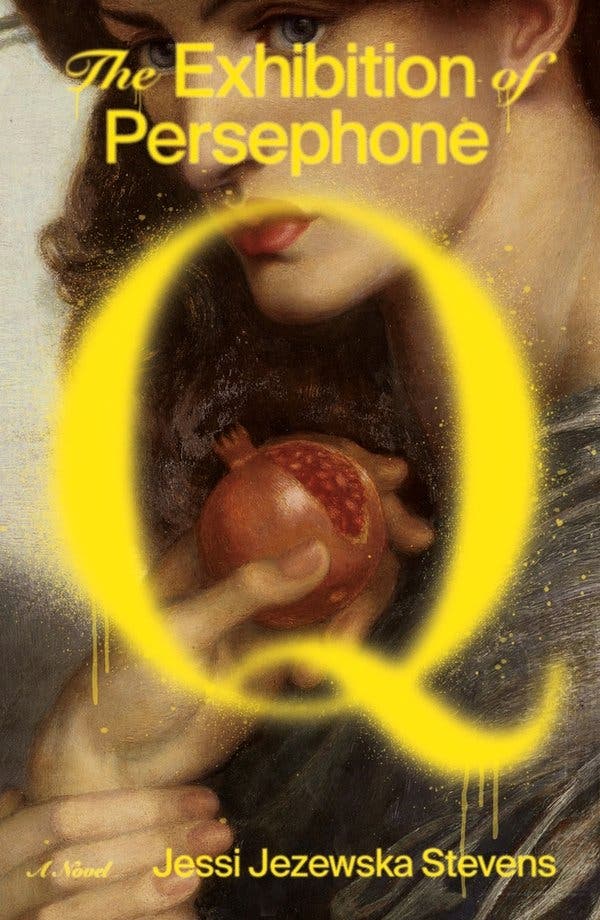THE EXHIBITION OF PERSEPHONE Q
By Jessi Jezewska Stevens
To the artist in love, a woman’s face is only a suggestion of what her portrait could be. “For centuries painters have been falling for their models, marrying their models, replacing their wives with mistresses-as-models,” says the narrator of Jessi Jezewska Stevens’s debut novel, “The Exhibition of Persephone Q.” She recalls Egon Schiele and his Wally, Rembrandt and his Saskia (as well as his servant Hendrickje), and of course Picasso, the “Olgas, Doras, Jackies” of his life immortalized and yet unrecognizable in his abstractions. “I couldn’t help but notice that when I compared the photographs of these women to the paintings in which they appeared, they almost never resembled themselves,” she worries. “The lover’s perspective transformed her. She was no longer the woman that she herself, glancing into the mirror behind the easel, would expect to see.”
Our narrator did not expect to receive an unaddressed envelope containing the exhibition catalog of the novel’s titular show, nor did she expect it to be the work of her ex-fiancé, a man she hasn’t seen in 10 years. Opening at a Manhattan gallery on Sept. 12, 2001, it is a series of photographs of a naked woman asleep in a bed, her face turned away. Behind her the city’s most identifiable landmarks — the Chrysler Building, the Empire State Building, the twin towers — have been digitally removed from the skyline. Most surprising of all is that, on second glance, she realizes the woman in the image is her. “It should not take so long,” she thinks with muted shame, “to identify oneself.” This coming from someone who goes by the sobriquet Percy Q, eliding the name her mother gave her, one so ordinary it is “plain to the point of cruelty, as if she wanted me to disappear.” Being unnamed — or, rather, renamed — doesn’t seem to bother her. Being untitled is another story.
[ Read an excerpt from “The Exhibition of Persephone Q.” ]
Percy lives in the Upper Manhattan neighborhood of Morningside with her husband of a few weeks, Misha. It is November 2001, and the city Percy wanders is full of missing faces plastered on brick walls, shrines to desperate grief or unreasonable hope — a population of people who never came home. Six weeks pregnant (she refers to the fetus as a “nebula,” an indistinct cloud of stars and matter), she has started, “in a small and violent impulse I still don’t understand,” pinching her husband’s nose while he sleeps, which somehow neither suffocates nor wakes him. In the apartment below is her boss, a self-help author; across the hall is Claire, the abandoned wife of a cartoonist who vanished around 9/11, his bank account cleared and his outstanding work assignments filed.

Percy’s life is populated by many people who could be considered psychic, perhaps least of all her actual psychic, a woman of dubious credentials but at least enough humor to say things like, “I knew you’d be back.” Misha, a math Ph.D., is also a prophet of sorts. He is preparing a presentation to sell his graduate thesis, a predictive advertising company called Insta-Ad, to venture capitalists. It is not, however, the accuracy of his online-shopping forecasts Percy is drawn to (“too often those things that seemed to me worthy of shock and surprise were not so notable to Misha”); it’s his certainty that the past can be left behind, the way he “sank beneath the surface of a day to reach a deeper kind of calm.” Whereas Percy lives life on repeat, long-gone years continuously reappearing on her doorstep.
 EU News Digest Latest News & Updates
EU News Digest Latest News & Updates



